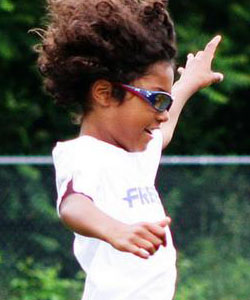An estimated 1 in 54 children have Autism (ASD), with many also suffering from undetected vision problems.
Children with autism (ASD) suffer disproportionately with vision problems, but unfortunately, often go undiagnosed for years.
Signs of vision problems
Many behaviors frequently associated with ASD are actually a result of an undiagnosed vision problem.
Signs of a vision problem can include:
- Amblyopia/lazy eye
- Light sensitivity
- Eye misalignment (eye turns)
- Fleeting views or rolling eyes
- Looking through/beyond objects
- Inaccurately tracking moving objects
- Difficulty maintaining eye contact with people
- Visual stimming (flapping fingers in front of eyes)
- Looking at objects from the side of the eyes
- Extreme fear or absence of fear of heights
- Lack of reciprocal play
If your autistic child shows any of these signs above, contact an eye doctor near you.
SEE RELATED: 2021 Update: Autism (ASD) and Vision
How can vision therapy help?
Vision therapy is a highly effective treatment program aimed at strengthening the connections between the eyes and the brain and improving the visual skills.
Each program is tailored to the needs of the individual and includes specific eye exercises, as well as the use of lenses, prisms and other therapeutic tools and techniques to achieve optimal results.
Vision therapy can help a child with ASD to improve their visual processing skills to help them better understand their surroundings and, as a result, feel more safe and secure in their environment. This in turn, will also reduce or even eliminate associated behaviors such as fears and anxiety, and may even help to improve eye contact and verbal skills.
Many vision therapy programs for children with ASD aim to strengthen:
- Central vision
- Peripheral stability
- Efficient eye coordination
- Visuospatial organization
- Visual information processing
What are yoked prism lenses?
Many vision problems result in visuospatial misjudgments, or the way objects and people move in space. This can lead to anxiety and distress in a child with ASD and lead to certain behavioral reactions, such as poor eye contact or looking beyond an object.
For this reason, many vision therapy programs for children with ASD include the use of yoked prism lenses. These lenses ‘trick’ the eyes by subtly moving objects and images to the location in which the brain thinks the image should appear.
Prism lenses are often used to eliminate double vision and improve vision clarity, but can also be effective in improving posture, balance and attention— thus helping a child with ASD feel more secure in their environment.
Vision therapy is an effective program that can help children with ASD see more clearly and comfortably, as well as overcome many associated behaviors rooted in an undetected vision problem.
Contact an eye doctor near you if you think your child can benefit from vision therapy.
LEARN MORE: Vision for Special Needs
Vision therapy can help a child with ASD to improve their visual processing skills to help them better understand their surroundings and, as a result, feel more safe and secure in their environment.

